Archivo de noticias y eventos
301 - 350 de un total de 2404
También puede acceder a la lista de noticias publicadas en los medios relacionadas con el Instituto de Astrofísica de Andalucía - CSIC.
Pages
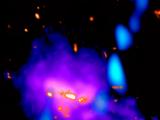
|
30/03/2023
Se halla una corriente cósmica que muestra cómo se forman las galaxias El Instituto de Astrofísica de Andalucía (IAA-CSIC) participa en el hallazgo de una corriente de gas que alimenta una galaxia lejana y masiva, y que apunta a la existencia de una red de suministro de material a gran escala en el universo |
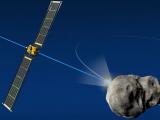
|
01/03/2023
El impacto de la misión DART excavó más de cinco millones de kilos de material en el asteroide Dimorfo El IAA-CSIC participa en el estudio del material que expulsó el impacto, que alteró la órbita del asteroide en torno a su compañero Dídimo y produjo un cráter |
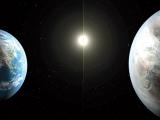
|
22/03/2023
Un nuevo sistema planetario compuesto por una supertierra y un minineptuno, clave para entender cómo se forman los planetas El Instituto de Astrofísica de Andalucía (IAA-CSIC) encabeza el hallazgo de TOI-2096, un sistema planetario único en su especie |
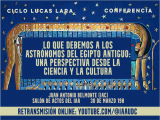
|
30/03/2023 - 19:00
Lo que debemos a los astrónomos del Egipto antiguo: una perspectiva desde la ciencia y la cultura El Egipto antiguo fascina por sus monumentos y sus tesoros, y algunos de sus personajes figuran en el acervo colectivo. Sin embargo, en general, se ignora que Egipto también tuvo una contribución substancial a la ciencia, la astronomía incluida. Los filósofos griegos viajaban a Egipto en busca de sabiduría. Aquí analizaremos cómo un calendario gobernado por las inundaciones anuales del Nilo acabó convirtiéndose en el calendario que regula la... Juan Antonio Belmonte |

|
28/03/2023 - 12:30
International Asteroid Impact Defense Collaboration The defense of our planet against asteroid impacts counts on international collaboration. NASA's OSIRIS-REx and Japan's Hyabusa2 spacecraft studied two potentially hazardous asteroids Bennu & Ryugu and bring samples back to Earth. NASA's DART, Italy's LICIACube and ESA's Hera spacecraft test a method of planetary defense against asteroids. Dr. Humberto Campins |
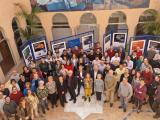
|
16/03/2023
Finaliza la visita al IAA-CSIC de su Comité Científico Asesor Externo (ESAB) Durante los días 14 y 16 de marzo se ha desarrollado la visita a las instalaciones del IAA-CSIC por parte del Comité Científico Asesor Externo (ESAB), compuesto por investigadores e investigadoras de reconocido prestigio internacional cuyo principal objetivo es revisar las actividades del IAA y proporcionar asesoramiento en acciones futuras. |

|
14/03/2023
El cambio climático aumentará los incendios forestales producidos por rayos de tormenta El Instituto de Astrofísica de Andalucía (IAA-CSIC) encabeza un estudio que concluye que los rayos podrían aumentar un 40% antes del fin de este siglo. El trabajo apunta a un gran aumento de los incendios forestales en la cuenca mediterránea, además de en el centro y en la costa occidental de Norteamérica |

|
13/03/2023
Los premios ‘Granada, Ciudad de la Ciencia y la Innovación 2022’ El Ayuntamiento de Granada reconoce con los premios ‘Granada, Ciudad de la Ciencia y la Innovación 2022’ el esfuerzo y la aportación de la comunidad científica granadina en la consecución del proyecto de IFMIF-Dones. Destacamos a nuestros investigadores premiados, Ascensión del Olmo y Jose Luis Gomez, y la mención especial al granadino Rafael Rodrigo Montero, que fue director del Instituto de Astrofísica durante trece años. |
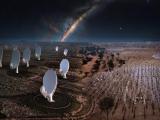
|
08/05/2023 - 10/05/2023
https://www.granadacongresos.com/skaopenscience Granada |

|
20/06/2023 - 12:30
Radio continuum halos in nearby galaxies and the CHANG-ES project About a decade ago, the upgrade from the classic Very Large Array into the EVLA, i.e. the Karl G. Jansky Very Large Array (VLA), made it possible to observe fainter radio continuum emission than ever before. The project Continuum Halos in Nearby Galaxies - an EVLA Survey (CHANG-ES, PI: J. Irwin) has allowed us to probe gaseous halos of 35 edge-on galaxies with arcsecond details and faint microJansky/beam sensitivities, and to begin answering... Theresa Wiegert |
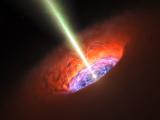
|
07/03/2023
Los cuásares más brillantes y lejanos, tanto jóvenes como viejos, muestran poderosos vientos galácticos El Instituto de Astrofísica de Andalucía (IAA-CSIC) encabeza el estudio de veintidós cuásares muy luminosos y distantes que completa nuestro conocimiento sobre la diversidad de estos objetos |
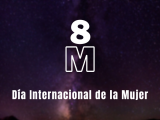
|
03/03/2023
8M: Día Internacional de la Mujer 2023 El Instituto de Astrofísica de Andalucía participa en la celebración del Día Internacional de la Mujer a través de dos actividades: el "Primer Encuentro de Científicas y Empresarias de Granada" y la mesa redonda online "Igualdad y Sociedades Científicas" ... |

|
22/06/2023 - 12:30
SO colloquium: X-ray Polarimetry: a New Window to the Universe Polarimetry is a very important technique for understanding magnetic fields and high-energy processes in the Universe. While we have been studying polarization in the radio and optical side of the electromagnetic spectrum for decades, what happens at higher energies has, until recently, eluded us. In 2021 NASA finally launched the first X-ray polarimeter, the Imaging X-ray Polarimetry Explorer - IXPE, offering us a completely new window to the... Dr. Yannis Liodakis |
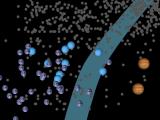
|
22/02/2023
El instrumento CARMENES multiplica el número de planetas conocidos en la vecindad solar Se hacen públicas veinte mil observaciones de CARMENES, obtenidas desde el telescopio de 3.5 metros del Observatorio de Calar Alto (CAHA). El instrumento, codesarrollado por el Instituto de Astrofísica de Andalucía (IAA-CSIC), ha permitido descubrir 59 planetas, algunos en la zona de habitabilidad |

|
27/04/2023 - 12:00
El Futuro de la Astrofísica de muy altas energías a través del Open Science: Oportunidades con el Cherenkov Telescope Array Observatory (CTAO) El jueves 27 de abril a las 12:00 CEST, el Cherenkov Telescope Array Observatory (CTAO) y el Instituto de Astrofísica de Andalucía (IAA-CSIC) celebrarán un evento gratuito y abierto para investigadores interesados en la Ciencia Abierta y posibles sinergias con el CTAO, así como para estudiantes de grado, máster y doctorado que deseen desarrollarse profesionalmente en el campo de la Astrofísica de muy altas energías. El seminario, que tendrá... Dr. Roberta Zanin, Dr. Juan Cortina, Dr. Rubén López Coto y Dr. Francisco Colomer |

|
02/03/2023 - 12:30
J-PAS: a survey for tracing the role that star formation and environment play in galaxy evolution The processes that explain the evolution of galaxies from the blue cloud to the red sequence are still under discussion. Internal processes, named as mass-quenching, because they are linked to the galaxy mass or AGN feedback, could be responsible of the rapid quench of the star formation in galaxies. Besides the stellar mass, the evolution of the galaxy populations is also a function of the environment. Unlike the mass quenching, the... Dr. Rosa González Delgado |
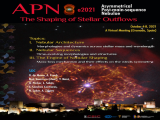
|
04/10/2021 - 08/10/2021
http://apn8.iaa.csic.es Granada |

|
16/02/2023
La serie ‘Territorio Gravedad’, producida por el IAA-CSIC, se estrena en televisión y en plataformas El IAA-CSIC y Lipssync Medialab han producido esta docuficción sobre el cosmos con la gravedad como eje vertebrador. Los primeros capítulos podrán verse en La2 del 20 al 23 de febrero y posteriormente estarán disponibles en Filmin y Vimeo |

|
16/02/2023
SOMMa impulsa sus proyectos tecnológicos en Transfiere 2023 El IAA-CSIC participa en el foro a través de la Alianza SOMMa, donde presentará la cámara SPGCam desarrollada para la misión SUNRISE III |

|
14/02/2023
El IAA-CSIC completa la primera red de telescopios robóticos presente en los cinco continentes España se convierte en el primer país en disponer de una red global de observatorios autónomos. La Red BOOTES, que cuenta con siete instalaciones, constituye una red pionera dedicada a vigilancia espacial y al estudio de fenómenos cósmicos transitorios, que brillan de forma breve, intensa y repentina |

|
13/04/2023 - 12:30
Coloquio SO: A holistic approach to exoplanet spectroscopy During the last two decades, multiple observation techniques have enabled the study of exoplanet atmospheres, informing us about their chemical composition, thermal distribution and transport processes. The most successful techniques include low-resolution transit and eclipse spectroscopy, phase curves, and high-resolution Doppler spectroscopy. In all cases, the extraction of the atmospheric signal presents a challenge, being comparable to or... Guiseppe Morello |

|
07/03/2023 - 12:30
Sub-milliarcsecond astronomy with Imaging Atmospheric Cherenkov Telescopes The angular size of a star is a critical factor in determining its basic properties. Together with the distance, it provides the physical diameter of the star which can be used to yield luminosity and mass estimates. Direct measurement of stellar angular diameters is difficult: at interstellar distances stars are generally too small to resolve by any individual imaging telescope. This fundamental limitation can be overcome by several methods... Dr. Tarek Hassan |

|
21/04/2023 - 12:30
Gamma rays as cosmic ray tracers: how can CTAO contribute to the cosmic ray physics Gamma-ray emission produced by interactions of cosmic rays with interstellar matter and radiation fields is a probe of non-thermal particles in galaxies. After decades of instrumental improvements in the field of gamma-ray astronomy, different scales and environments are now accessible and their gamma-ray observations reveal several properties of cosmic rays, especially in our Galaxy. I will provide a short review of the status of the subject... Roberta Zanin |

|
23/03/2023 - 12:30
SO coloquio: Investigating the impact of quasar feedback on the central kiloparsecs of galaxies Active galactic nuclei (AGN) feedback is the effect that nuclear activity produces in the interstellar and circumgalactic medium of galaxies. Different modes of AGN feedback, which can be broadly divided into radiative/quasar and kinetic/radio, are now considered key processes in the evolution of massive galaxies by regulating black hole and galaxy growth. Indeed, a wealth of observational evidence demonstrates that feedback from supermassive... Dr. Cristina Ramos Almeida |

|
16/02/2023 - 12:00
School visit School visit Sara Garcia. |

|
16/03/2023 - 12:30
An observational study of massive star forming regions at radio wavelengths In their early stages, massive stars have a profound impact on their hosting cloud as reflected by signposts like shocks, bars and shells of swept material resulting from prominent stellar winds, or photo-ionized (HII) regions produced by energetic irradiance. This activity must be taken into account in the study of the mechanism of formation of either massive stars or nearby lower mass companions affected by such harsh conditions. It is known... Josep Maria Masqué |

|
09/03/2023 - 12:30
When accretion is as vital as extreme: from massive young stars to binary black holes Accretion is vital for understanding the properties of a number of astrophysical objects, including massive young stars and black holes. For the former, accretion drives the stellar mass growth and multiplicity through gas fragmentation. It also powers strong outflows that regulate the interstellar medium. For black holes, only accretion allows for electromagnetic detection. Hence, the multi-messenger astronomy, for which the loudest sources of... Dr. Raphael Mignon-Risse |
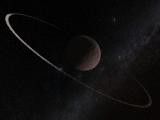
|
08/02/2023
El objeto transneptuniano Quaoar muestra un anillo que cuestiona una teoría vigente desde 1850 El Instituto de Astrofísica de Andalucía (IAA-CSIC) participa en el hallazgo de un denso anillo en este objeto que, con un tamaño equivalente a la mitad de Plutón, plantea varios problemas |
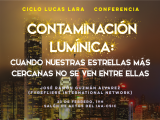
|
23/02/2023 - 19:00
Contaminación Lumínica: Cuando nuestras estrellas más cercanas no se ven entre ellas Conferencia de divulgación sobre las consecuencias del exceso de iluminación artificial nocturna. José Ramón Guzmán Alvarez |
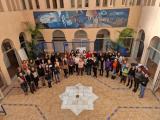
|
11/02/2023
Día Internacional de la Mujer y la Niña en la Ciencia 2023 Un año más, el Instituto de Astrofísica de Andalucía se suma a la celebración del Día Internacional de la Mujer y la Niña en la Ciencia, que tiene como objetivo visibilizar la labor científica de las mujeres y fomentar las vocaciones en las niñas |
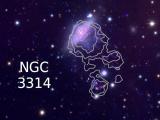
|
01/02/2023
Se hallan inesperadas colas de gas y estrellas en dos galaxias del cúmulo de Hidra El IAA-CSIC encabeza el estudio de NGC 3312 y NGC3314a, dos galaxias en interacción avanzada con el cúmulo que deberían haber perdido la mayor parte de su gas. El trabajo, que busca comprender cómo el entorno afecta a las galaxias dentro de un cúmulo, revela colas de marea con una anómala cantidad de gas frío donde, incluso, se están formando estrellas |

|
23/02/2023 - 12:30
ALMA: Planned Sensitivity Upgrades, and Molecular Gas Imaging of a z=0.376 HI-Detected Galaxy This talk will cover two distinct topics in progress, one programmatic and the other science: I will first discuss the ALMA Wideband Sensitivity Upgrade (WSU), and then I'll talk about ALMA followup of the highest redshift HI detection in the COSMOS HI Large Extragalactic Survey (CHILES) made with the first 178 hours of observing. With regard to the WSU, the ALMA Project is embarking on a partner-wide initiative to at least double, and... Dr. Jennifer Donovan Meyer |

|
31/01/2023
Granada acogerá el IX Congreso de Comunicación Social de la Ciencia 2023 El Congreso se ha presentado en el Ayuntamiento de Granada junto a representantes de las diferentes entidades organizadoras. |
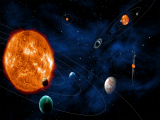
|
30/03/2023 - 12:30
Preparation and Asteroseismic exploitation of the PLATO Mission Thanks to ultra-precise space missions, we are living an era of big scientific discoveries in the stellar and planetary physics fields. PLATO will capitalise on the developments of successful past missions such as CoRoT, Kepler/K2, TESS and CHEOPS that studied stars and their planetary systems. PLATO will detect and characterise terrestrial exoplanets at orbits up to the habitable zone of solar-type stars. Transit measurements and... Dr. Javier Pascual |
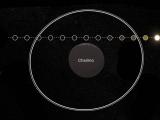
|
25/01/2023
El telescopio James Webb observa los anillos de Cariclo con una técnica de ocultación de alta precisión El Instituto de Astrofísica de Andalucía (IAA-CSIC) encabeza una campaña de observación con el JWST para captar las sombras de la luz estelar producidas por los delgados anillos del objeto, situado más allá de Saturno. Posteriores observaciones revelaron que el hielo de agua cristalina domina el espectro de Cariclo y sus anillos, lo que apunta a que se producen en él microcolisiones continuas |
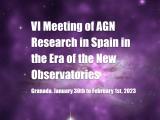
|
25/01/2023
VI Meeting of AGN Research in Spain in the Era of the New Observatories Tras el éxito de las reuniones anteriores sobre AGNs convocadas en nuestro país, el IAA-CSIC acoge esta reunión, que permitirá revisar la comprensión actual en la investigación sobre AGNs |

|
26/01/2023 - 19:00
El cambio climático. Una puesta al día Revisamos el nuevo informe del Grupo Intergubernamental de Expertos sobre el Cambio Climático (IPCC) Rainer Schödel |

|
30/01/2023 - 12:30
SO Coloquio: Dirty Dancing: piercing the dusty environment of merging supermassive black holes It is a posit of modern astrophysics that most massive galaxies host a super- massive black hole (millions to billions of times more massive than the Sun). These black holes affect the evolution of galaxies well beyond their gravitational sphere of influence (which does not extend wider than 1/1000th of the typical galaxy linear size). In turn, the evolution of galaxies affects the growth of black holes through, e.g., galaxy merging.... Matteo Guainazzi |
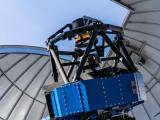
|
09/01/2023
El IAA-CSIC participa en dos de los nuevos cartografiados del telescopio JAST80 del Observatorio Astronómico de Javalambre Las últimas fases de las estrellas y la formación y evolución de las estrellas masivas serán los objetos de estudio de estos nuevos proyectos de legado |
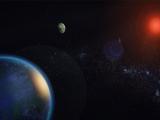
|
15/12/2022
ESPRESSO y CARMENES descubren dos exotierras en la zona habitable de una estrella cercana al Sol El Instituto de Astrofísica de Andalucía (IAA-CSIC) participa en el descubrimiento de un sistema planetario múltiple en torno a GJ1002 |
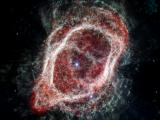
|
14/12/2022
El telescopio James Webb revela que entre cuatro y cinco estrellas participaron en la formación de la nebulosa del Anillo Sur El Instituto de Astrofísica de Andalucía (IAA-CSIC) participa en un estudio que apunta a la interacción de un sistema múltiple de estrellas en la formación de la nebulosa, y que ocupó la portada de la revista Nature Astronomy |
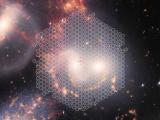
|
13/12/2022
Primera luz del instrumento WEAVE El Instituto de Astrofísica de Andalucía (IAA-CSIC) participa en el equipo científico de WEAVE, cuyas primeras observaciones ya muestran la alta calidad de los datos que aportará el espectrógrafo |
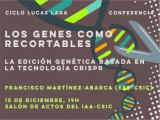
|
15/12/2022 - 19:00
Los genes como recortables. La edición genética basada en la tecnología CRISPR En el año 2012, un trabajo publicado en la revista Science demostró que la tecnología CRISPR podía ser usada de una manera precisa y eficiente en la edición del genoma de un ser vivo. Desde entonces, el método ha llevado a miles de laboratorios a utilizarlo en aplicaciones que van desde biomedicina hasta agricultura. Francisco Martínez-Abarca |
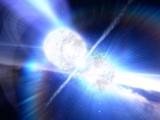
|
07/12/2022
Una colisión estelar que brilló casi un minuto complica el escenario de las explosiones estelares El Instituto de Astrofísica de Andalucía (IAA-CSIC) participa en el estudio de una explosión de rayos gamma (GRB) cuyas características exigen una revisión del marco teórico que explica estos estallidos |
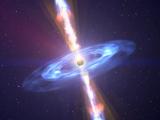
|
30/11/2022
Detectan el chorro de materia que emerge de un agujero negro supermasivo al devorar una estrella El Instituto de Astrofísica de Andalucía (IAA-CSIC) participa en dos artículos que analizan este fenómeno, muy raramente observado |

|
02/11/2022 - 04/11/2022
https://home.iaa.csic.es/fundcosmo22/ Granada |

|
18/10/2022 - 21/10/2022
https://www.granadacongresos.com/severoochoa Granada |

|
09/09/2022 - 11/09/2022
https://iota-es.de/esop41/index.php Granada |
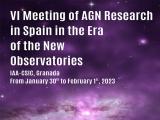
|
30/01/2023 - 01/02/2023
https://www.granadacongresos.com/agn2023 Granada |
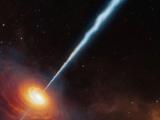
|
23/11/2022
Determinan cómo se produce la aceleración de partículas en los chorros de un agujero negro supermasivo El Instituto de Astrofísica de Andalucía (IAA-CSIC) participa en un estudio que plantea que las ondas de choque podrían hallarse en el origen de la aceleración de las partículas en los chorros |